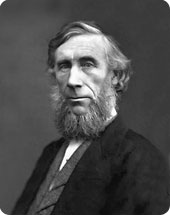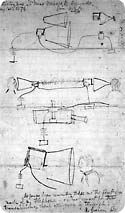Location:Home > News >
Knowledge about History of Fiber Optics from changguang(1)
History of Fiber Optics
As far back as Roman times, glass has been drawn into fibers. Yet, it was not until the 1790s that the French Chappe brothers invented the first "optical telegraph." It was a system comprised of a series of lights mounted on towers where operators would relay a message from one tower to the next. Over the course of the next century great strides were made in optical science.


John Tyndall - British Physicist - Light
John Tyndall, British physicist, demonstrated that light signals could be bent.
In the 1840s, physicists Daniel Collodon and Jacques Babinet showed that light could be directed along jets of water for fountain displays. In 1854, John Tyndall, a British physicist, demonstrated that light could travel through a curved stream of water thereby proving that a light signal could be bent. He proved this by setting up a tank of water with a pipe that ran out of one side. As water flowed from the pipe, he shone a light into the tank into the stream of water. As the water fell, an arc of light followed the water down.
Alexander Graham Bell patented an optical telephone system called the photophone in 1880. His earlier invention, the telephone, proved to be more realistic however. That same year, William Wheeler invented a system of light pipes lined with a highly reflective coating that illuminated homes by using light from an electric arc lamp placed in the basement and directing the light around the home with the pipes.
Graham Bell Telephone Sketch
Sketch of a telephone system by Alexander Graham Bell. Bell patented an optical telephone system which assisted in the advancement of optical technology.
Doctors Roth and Reuss, of Vienna, used bent glass rods to illuminate body cavities in 1888. French engineer Henry Saint-Rene designed a system of bent glass rods for guiding light images seven years later in an early attempt at television. In 1898, American David Smith applied for a patent on a dental illuminator using a curved glass rod.


In the 1920s, John Logie Baird patented the idea of using arrays of transparent rods to transmit images for television and Clarence W. Hansell did the same for facsimiles. Heinrich Lamm, however, was the first person to transmit an image through a bundle of optical fibers in 1930. It was an image of a light bulb filament. His intent was to look inside inaccessible parts of the body, but the rise of the Nazis forced Lamm, a Jew, to move to America and abandon his dream of becoming a professor of medicine. His effort to file a patent was denied because of Hansell's British patent.
In 1951, Holger Moeller applied for a Danish patent on fiber-optic imaging in which he proposed cladding glass or plastic fibers with a transparent low-index material, but was denied because of Baird and Hansell's patents. Three years later, Abraham Van Heel and Harold H. Hopkins presented imaging bundles in the British journal Nature at separate times. Van Heel later produced a cladded fiber system that greatly reduced signal interference and crosstalk between fibers.
Also in 1954, the "maser" was developed by Charles Townes and his colleagues at Columbia University. Maser stands for "microwave amplification by stimulated emission of radiation."
Get in Touch
+86-21-3996-3837
alex@changguangchina.com
+86-15216725374


